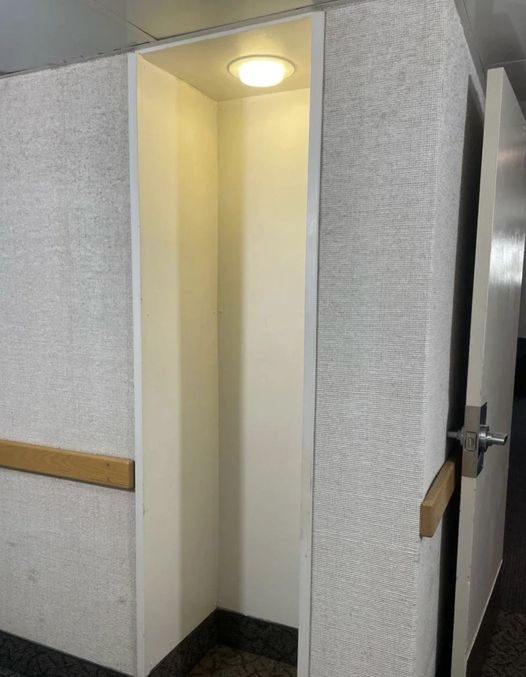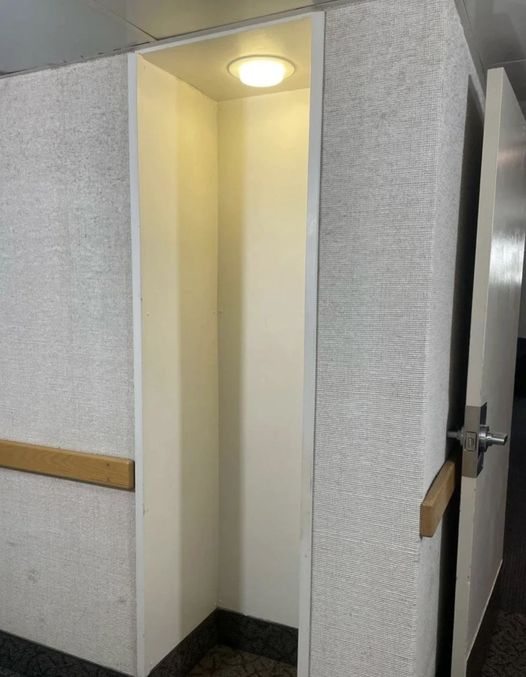Imagine a world without smartphones, where connecting with loved ones required patience and effort. Long before instant messaging and video calls, college students in the 1960s, ‘70s, and ‘80s relied on an unassuming yet indispensable tool: the phone booth. These booths, scattered across campuses, were more than just communication devices; they were sanctuaries offering a brief escape from the chaos of dorm life and a connection to the world beyond.

Hidden Corners of College Life: Social Lifelines
On older college campuses, you might still find traces of these once-essential spaces—an empty nook with a light bulb overhead or the shadow of a shelf where a phone once sat. These aren’t just relics; they’re reminders of a time when students lined up to make calls home. Before cell phones existed, phone booths were the only way to bridge the gap between students and their families.
In those days, students often came from distant towns or states, leaving behind familiar comforts. The phone booth became their lifeline, a crucial link to loved ones, and a source of solace amid the pressures of academic life. Beyond practicality, these booths held emotional significance, as they connected students to the people who mattered most.
The Rise of the Phone Booth
As telecommunications expanded during the mid-20th century, phone booths became staples of campus life. Dormitories were lively yet chaotic, filled with chatter, music, and constant activity. Privacy was hard to come by, and making a phone call often required a quiet space. The phone booth filled this need perfectly, providing a refuge where students could focus on their conversations without distraction.
Though modest in design, these booths were transformative. A simple phone on the wall, sometimes accompanied by a small light overhead, was enough to create a moment of calm. For a few precious minutes, students could lean against the booth’s walls, close out the noise of the dorm, and immerse themselves in conversation with someone far away.
Simple Yet Profound Design
Phone booths weren’t extravagant. Most lacked full doors, but even a small partition provided enough seclusion to make them effective. The light above added practicality and comfort, creating a serene atmosphere. These booths became small havens where students could pause, gather their thoughts, and reconnect with family or friends.
The impact of these booths went beyond their physical setup. In a world without constant digital access, phone booths turned every call into an event. Students had to plan their calls carefully—collecting spare coins, waiting their turn, and savoring the few minutes they had on the line. Each call felt significant, a moment to reconnect that carried an emotional weight modern communication often lacks.
The Fall of the Phone Booth
As the 1990s brought the rise of cell phones, the need for phone booths dwindled. Suddenly, students could make calls anytime and anywhere without the constraints of shared spaces or spare change. The booths that once symbolized connection and effort began to disappear, replaced by the convenience of personal devices.
Yet for those who lived through the era of the phone booth, these spaces remain iconic. They represent a time when communication required intention and effort. Unlike today’s instant messages, phone calls back then involved planning and patience, which made them feel more personal and meaningful.
Nostalgia for a Slower Era
Walking past a surviving phone booth on a college campus today evokes a wave of nostalgia. You can almost hear the clink of coins dropping into the slot, feel the cool metal of the receiver, and anticipate the sound of a distant ringing. These moments, though slower than modern communication, carried a depth that feels rare in today’s fast-paced world.
For students of the past, phone booths weren’t just tools—they were lifelines. Whether enclosed by doors or open to the hallway, these spaces provided a sense of privacy and calm in an otherwise overwhelming environment. They were places where students could escape the noise, share their struggles, and feel a little closer to home.
A Symbol of Connection and Progress
It’s easy to dismiss phone booths as outdated relics, but they hold a deeper significance. They remind us of a time when making a phone call was an event that required time and care. Each call was a deliberate act of connection, something we often take for granted in today’s instant communication landscape.
The next time you pass by one of these forgotten spaces, take a moment to imagine the students who once stood there. Picture them clutching coins, dialing familiar numbers, and anxiously waiting to hear a loved one’s voice. These booths symbolize more than just the past; they reflect how far we’ve come in communication while reminding us of the value of thoughtful, intentional connection.
Even in today’s hyper-connected world, the memory of phone booths lingers as a testament to the power of meaningful communication. For those who experienced them, these spaces were more than just a part of campus—they were lifelines, sanctuaries, and a small yet significant piece of history that continues to resonate.

Leave a Reply